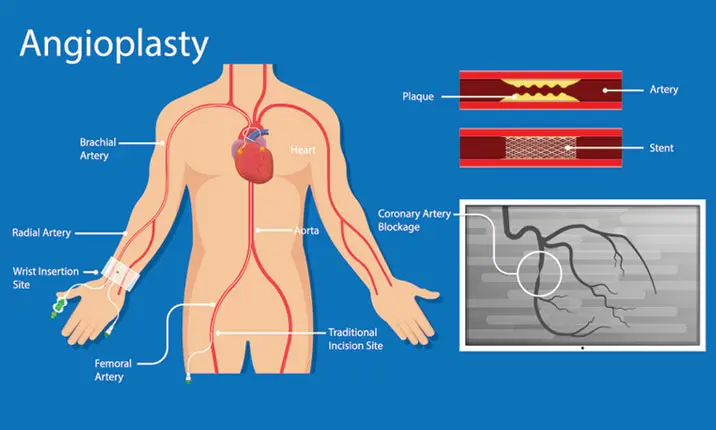Clinical presentations and management of heart diseases in men are well-documented as research trials involving heart diseases conventionally includes large proportions of men but very few women. As a woman, what are the tell-tale signs of heart conditions to look out for and how can you reduce your risks of heart diseases?
What are the common heart diseases?
Almost 1 out of every 3 women in Singapore die of heart diseases. However, 90% of women remained unaware according to a national survey.
The most common heart disease in women remains coronary artery disease, which is blockage in the blood vessels supplying blood and oxygen to the heart.
Heart diseases may also result from:
- problems with the pumping or relaxation functions of the heart muscle (congestive heart failure)
- abnormal heart rhythm (arrhythmia)
- problems with heart valves (valvular heart disease)
- diseases of the heart muscles (cardiomyopathy)
Who are at risk of heart diseases?
Heart disease can occur at any age. However, there are health conditions and behaviours that increase risks of developing heart diseases. Recognise the risk factors of heart disease in women so you can take preventive measures early.
Known and unmodifiable risk factors of heart diseases include:
- Increasing age
- Family history of heart conditions
- Menopause
- Ethnicity
Medical conditions that increases risks of heart diseases:
- Diabetes Mellitus
- Hypertension (high blood pressure)
- High cholesterol levels
- Medical conditions during pregnancy (including hypertension, gestational diabetes, pre-term delivery)
- Previous breast cancer treatment
- Being overweight/obesity
- Autoimmune diseases
- Psychiatry conditions including depression
Unhealthy lifestyle habits that put you at risk of heart diseases:
- Dietary (consumption of foods that are high in saturated fats, trans fat, cholesterol and salt)
- Physical inactivity
- Stress (response to mental/ emotional stress)
- Smoking
- Drinking too much alcohol
Possible symptoms of heart disease in women that you shouldn't ignore
Classic symptoms of heart disease are as common in women as men, and these include:
- Central chest discomfort, pain or tightness
- Radiation of the discomfort to the neck, jaw, throat, upper abdomen or back
- Shortness of breath
- Pain, numbness, weakness or coldness in your legs or arms if the blood vessels in those parts of your body are narrowed
Other symptoms that can occur in heart diseases include:
- Nausea or vomiting
- Cold sweat at rest
- Feeling lightheaded or dizzy
- Unusual or persistent fatigue
- Indigestion
- Palpitations or fluttering in the chest
- Swelling in your legs, feet, or ankles
- Dry cough or wheezing
- Fainting spells
How can you tell if you are having a heart attack?
A heart attack happens when the blood flow to your heart is blocked so it cannot get the oxygen it needs.
Symptoms of a heart attack usually start with discomfort, pressure, heaviness, tightness, squeezing, or pain in your chest, arm, or below your breastbone. This discomfort may go into your back, jaw, throat, or arm.
Associated symptoms may include shortness of breath, cold sweats, nausea, vomiting, palpitations or dizziness. These symptoms may come and go, lasting minutes each time and may persist and worsen.
Symptoms of heart attack in women are the same as clinical presentations described in men. However, women tend to describe more atypical symptoms and delay responding to their symptoms. Many women recognise that they are having a heart attack late. They often show up in the emergency room after significant delay and thus, have more complications.
Be aware of the symptoms of a heart attack. It is important to recognise them early and proceed to the nearest Urgent Care Centre (UCC) should you suspect a heart attack. The earlier the treatment, the higher the chance of survival with less complications.
How is heart attack treated?
The treatment for heart attack includes early coronary angiogram to assess the severity of blockage in the coronary arteries and medications. Most of the time, this is followed by coronary angioplasty and stenting to resume blood flow to the heart muscles as soon as possible. Coronary artery bypass surgery may be an option in the cases with severe coronary arteries blockages. The cardiologist managing will advise the best management options. The treatment strategies should be the same for both genders.
How can you reduce your risk of heart diseases?
The key to reducing risks of heart diseases is maintaining a heart healthy lifestyle. This includes:
- Stopping smoking
Stop smoking right away! If quitting smoking is a challenge for you, let your doctor know. There are proven and effective methods to kick the habit. Also, try to avoid second-hand smoke. If you don't smoke or use tobacco products, don't ever start. - Exercise
Exercise needs to be incorporated into daily life. Physical activity is a cornerstone of maintaining and improving heart health.
The advice is to engage in at least 150 minutes per week of accumulated moderate intensity exercise. This includes brisk walking (4 – 6km/h), biking (8 – 15km/h), ballroom dancing, active yoga or recreational swimming. Alternatively, 75 minutes of vigorous to intensive aerobic physical activity a week. Such workouts include jogging or running, biking (≥15km/h), singles tennis or swimming laps. The exercise routine could also come in a combination of moderate and vigorous physical activity.
Build exercise into your daily routine such as taking the stairs whenever possible, or incorporating walking into your daily commute while taking the bus or MRT. Consider walking in place while watching television instead of just lounging. Incorporating some exercises during housework chores routine may also work!
In view of the present COVID-19 situation, please be mindful of social distancing measures and consider exercising at home.
- Keep a heart healthy diet
Include whole grains, a variety of fruits and vegetables, low-fat products and lean meats into your diet. Avoid added and hidden sugars and too much salt. - Keep a healthy weight
Maintaining a body mass index (BMI) of below 25kg/m2 and waist circumference < 35 inches can reduce your risk of heart disease. - Manage stress
Constant stress can increase the risks of developing heart diseases by increasing risks of high blood pressure and metabolic disorders. It is important to keep stress away by learning and adopting relaxation techniques.
If you have any of the medical conditions (as mentioned in the list above), that could put you at risk of developing heart disease. This is why it is important to go for regular clinic appointments with your cardiologist, or a relevant medical specialist, and to take your medication regularly. This could reduce your risks of developing heart disease.
Be safe, not sorry
It is easy to dismiss the symptoms of heart disease as a mild or temporary condition. However, a heart attack can happen suddenly to anyone. It is important to be aware of the possible symptoms of heart disease and not to ignore the potential warning signs. The sooner you recognise the symptoms and seek treatment, the better your chance of survival with less complications.
The earlier you go for regular health screening, the earlier risk factors for heart diseases can be identified and treated.
Know your risks early. Incorporate heart healthy habits into your lifestyle. If you have symptoms, recognise them early and make an appointment to see a cardiologist as soon as possible to receive the necessary evaluation and treatment.














